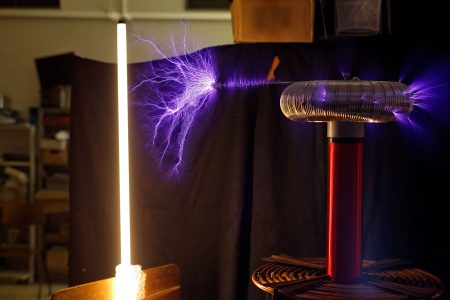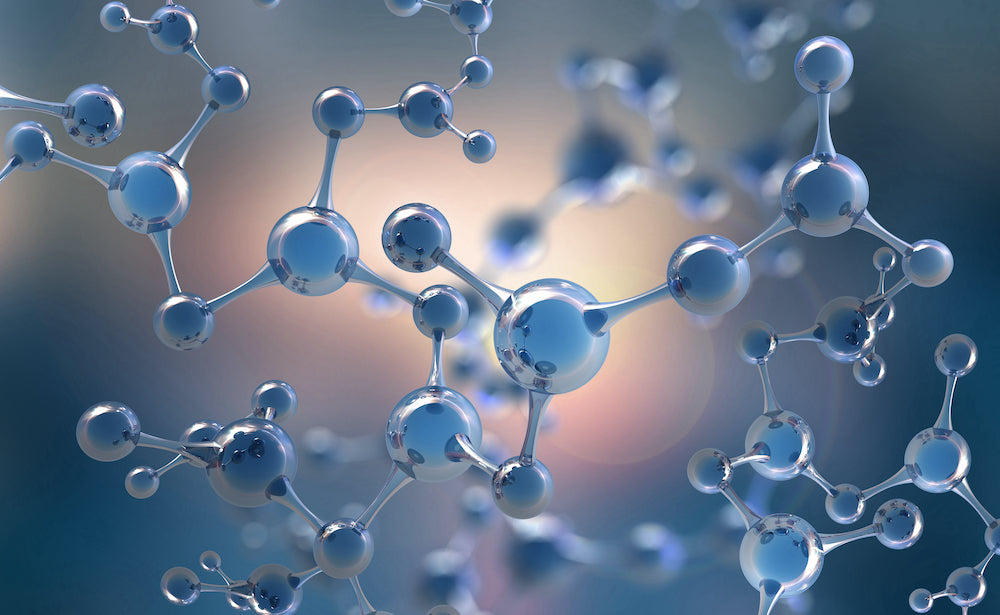Bipolar ionizers, as the name suggests, produce both positive and negative ions with the idea that they will charge floating particles and cause them to aggregate and fall out of the air. They use electricity to create ions that are released into the air with the purpose of reducing pollutants. Extensive research has been done on ion-generating air cleaners, with most indicating no appreciable effect on the air, either harmful or helpful.
Recent research published in the scientific journal Building and Environment has brought bipolar ionizers into the spotlight again. This research raises questions about the chemical impact of ions on components of the air such as VOCs and water vapor. The researchers were concerned that the ionizer they tested was having little to no beneficial impact and a possibly harmful secondary effect. Since this type of device has been around for decades, there are solid facts about how they work. This allows us to make an informed decision about the exact degree of ions we want in our air.
What are bipolar ionizers supposed to do?
There are many ways to construct a bipolar ionizer, but for the most part they all seem to use the same basic physical process. Ionizers generate ions by using a corona discharge or a brush discharge, which involves arcs of electricity shooting into the atmosphere. When electricity is discharged into the air it strips electrons from air molecules. This creates ions, which are molecules with unbalanced charge resulting from the wrong number of electrons.
If an ionizer uses “needlepoint ionization” then it is using corona discharge. A pointy needle is the most efficient way to create a corona discharge. However, this ionization phenomenon occurs in almost any high-voltage device. High voltage moving through a wire creates a particularly powerful electrical field around the wire that can ionize the air around it. Once ionized, air becomes a much better conductor of electricity. In high voltage technologies like power lines, the air around the cable can become ionized and discharge can occur in the form of sparks and arcs of electricity, which has to be avoided with careful engineering.
When the high-voltage conductor has a pointy needle shape, the air around the tip of the needle becomes ionized and corona discharges can occur as bright flashes of light that shoot out into the air like tiny lightning. This is one of the main mechanisms the popular Tesla coil, shown below, uses for its light shows.

A Telsa coil emits a brush discharge and ionizes the surrounding air which also stimulates light from a neon bulb.
Because air molecules that conduct electricity are necessarily charged and electricity heats the air and makes it expand away from the discharge, a lot of positive and negative ions will be emitted from air discharge like this. In a bipolar ion generator, these unbalanced molecules are then blown into the room by a fan and let free to react in the air.
Proponents of cleaning the air with this method usually cite two impacts on air quality as a result. The primary is that the ions will attach to particles in the air and impart their unbalanced charge, which will cause the particles to aggregate and fall to the ground. The other is that the ions will react with pollutants in the air, ideally damaging airborne viruses and bacteria and deactivating them.
What do we know about airborne ions in nature?
Removing particles from the air and deactivating viruses and bacteria are good ways to improve air quality. Also there has been some research into the beneficial effects of specifically negative ions on the body above and beyond cleaning the air. Though they are unstable and seek equilibrium, ions are created abundantly in nature through not just the electrical discharge that is lightning but also cosmic rays, sunlight, in turbulent water, and even in low concentrations by some plants.
The literature is mixed as to whether negative ions offer health benefits, with most studies unable to find any effect of ionizing the air. It is well-established that exposure to sunlight, running water, plants, and other aspects of nature is beneficial, but no evidence has so far pointed to negative air ions as the driving force.
Ions typically do not exist for long before rebalancing, which is probably part of the reason it’s been hard to find any health benefits. However, there are some ions that last longer than others. The most significant of these is ozone, which is a positively charged ion that can last in the air for several hours.
Ground ozone levels increase naturally during thunderstorms, though as a result of stratospheric ozone being pulled down to ground level instead of electric discharge. In this case of wide-spread ionization, asthma attacks increase due to a phenomenon called thunderstorm asthma. A study exploring if pollen, mold spores, or ozone was the primary cause of thunderstorm asthma found ozone to be the primary culprit. The study also noted that asthma hospital admissions increased regardless of if the ozone was the result of storms, pollution, or other causes.
Indoor Ions
While air ions are present in nature, there don’t seem to be any compelling reasons to bring them indoors. Since most of us spend more time indoors than outdoors, it’s important to know what impact bipolar ionizers will have on indoor spaces where we spend the most time.
The most well-known issue with some ionizers is the production of ozone. Not all ionizers produce ozone, the model investigated by the researchers who published in Building and Environment did not produce ozone, for example. Ozone is toxic and should never be purposefully used in an occupied space.
Research has borne out that ions make particles drop out of the air, but may not be the best solution because the deposited particles can be resuspended by human activity. In addition, the particles stick to the walls and floor around the device which is unsightly and increases the need to clean. Charged particles’ attraction to the walls and floor is not the only drawback. Just like they are more likely to stick to the walls, particles charged by ions will also be attracted to your lung tissue when you inhale them so are more likely to deposit in your lungs.
Even if the ionizer does not produce ozone and it is easy to remove the charged particles stuck to the walls, floor, and furniture, the researchers in Building and Environment identified a third possible issue. Volatile organic compounds (VOCs) that rise from living things, cleaning products, building materials and many other sources, became more toxic when exposed to the ions produced by the device in the study. Specifically they noticed that non-oxygenated VOCs became oxygenated, which in some cases makes them into irritants or even toxins.
The study in Building and Environment found that there was some modest removal of small particles, but other sizes stayed the same or increased slightly, and some degree of toxicity was present. While there is plenty of research showing the possibility that airborne particles can be reduced by emitting ions into the air, there are also studies urging caution and pointing out the drawbacks that potentially cancel out any perceived benefit of this approach.
At Molekule our PECO technology relies on reactions that occur on the surface of the filter, not in the air around or inside you. Part of the development of PECO was to ensure not only that it did not emit irritating ions like ozone, but that it removes them from the air, all without creating oxygenated byproducts.
Watch this blog, our Facebook, Instagram, and Twitter accounts for more on the latest research into air cleaning devices and any other air quality topic we can find.







